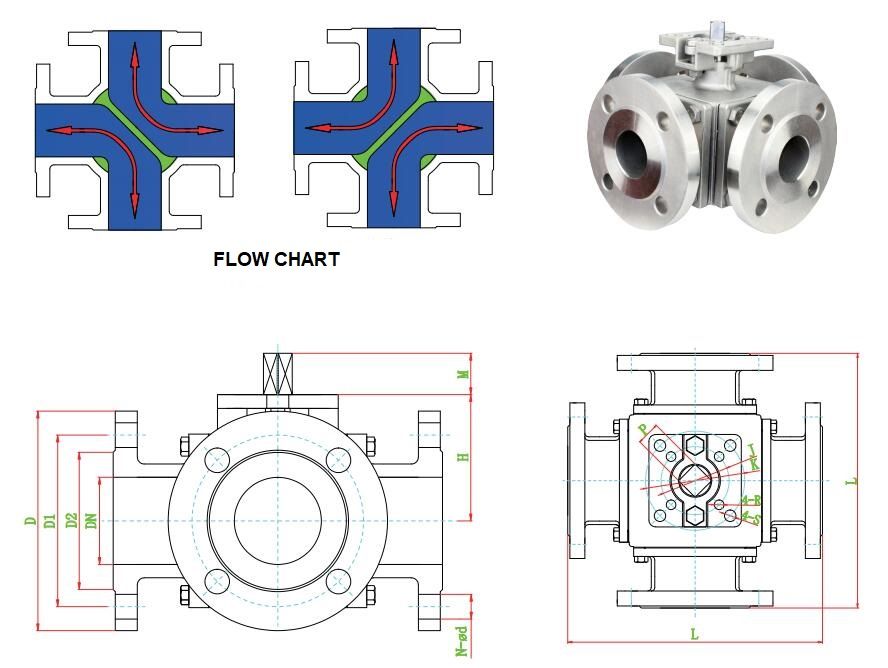แท็ก
ติดต่อเรา
วาล์วสี่ทาง: หลักการทำงาน
- เช้าเจียง
A four-way valve is a straightforward device designed to manage fluid flow within various systems. These valves are typically spool-type and feature equal surface areas for both the pump and the reservoir. Their vertical symmetry makes them suitable for applications requiring precise fluid flow control.
Structure of a Four-Way Valve
The four-way valve consists of a valve chamber with four ports. The valve spool contains two channels that connect adjacent ports, and it can take the form of a cylinder, cone, or sphere. Each port provides two flow positions, and the spool is generally positioned in the center. Importantly, when the valve is in a closed position, both the inlet and outlet ports remain open.
Functionality of a Four-Way Valve
While a four-way valve may seem like a basic directional control valve, it is primarily utilized in double-acting cylinder applications. These valves are equipped with four ports and two flow positions, consistently directing pressure to one side of the cylinder while allowing the other side to exhaust into the atmosphere. This functionality is particularly beneficial in systems requiring directional changes without signal loss.
Working Mechanism
The operation of a four-way valve involves the use of two disconnected “L-shaped” channels. Initially employed in early double-acting steam engines, the four-way valve controls steam flow to the cylinder. In actuator applications, it can also function in a blocking position, transmitting hydraulic fluid from the manifold to the closed end of the cylinder, while returning the same pressure to the reservoir.
Advantages of Four-Way Valves
Versatility: Four-way valves are multifunctional components that provide multiple flow path options, enabling engineers to control the direction of fluid flow in hydraulic or pneumatic systems effectively.
Efficient Control: These valves facilitate precise management of fluid flow, allowing effective control over system components such as actuators and cylinders.
Simplified Design: By integrating multiple functions into a single four-way valve, system designs become more compact, reducing costs and streamlining installation and maintenance.
Disadvantages of Four-Way Valves
Complexity: The additional features of four-way valves can increase system complexity, requiring careful consideration during the design phase.
Cost: Four-way valves may be more expensive than simpler alternatives, with initial investment costs influenced by size, materials, and automation features.
Maintenance Challenges: The complexity of four-way valves can lead to more intricate maintenance requirements, necessitating a solid understanding of internal components and potential failure modes.
Difference Between Three-Way and Four-Way Valves
Three-way valves have three ports—one inlet and two outlets (or vice versa)—and are typically used to transfer or mix flows. In contrast, four-way valves have four ports and are suited for more complex systems requiring flow direction changes between various paths.
บทสรุป
While four-way valves offer significant advantages in versatility, control, and system design simplification, it is crucial to consider their complexity, cost, and maintenance requirements for successful integration into hydraulic or pneumatic systems. Engineers must balance these factors to optimize system performance and efficiency in the long run.



